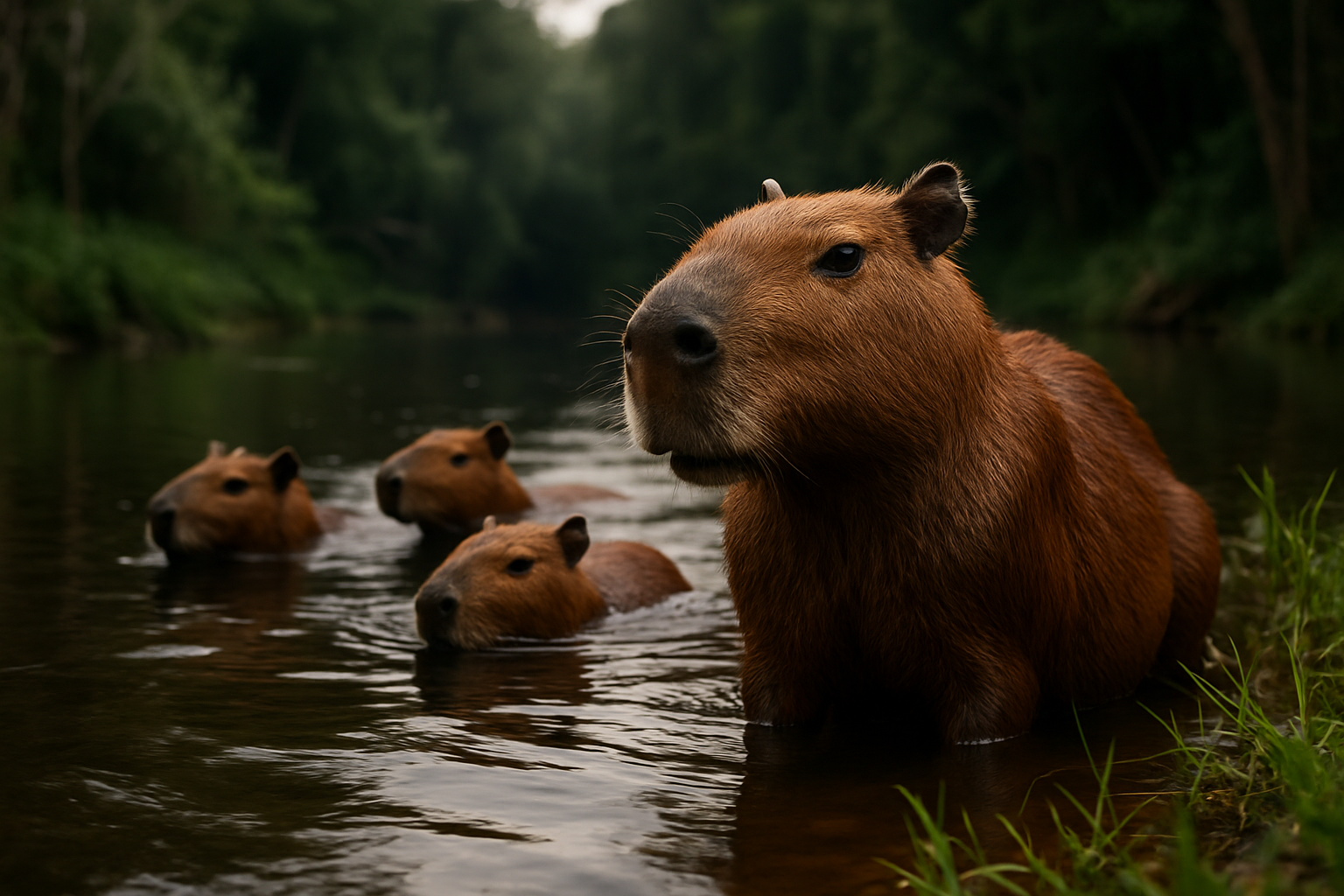Capybaras: The Gentle Giants of the Rodent World
In the lush wetlands of South America, a unique creature captures the hearts of wildlife enthusiasts and casual observers alike. The capybara, the world's largest rodent, stands out as a fascinating subject in the animal kingdom. This article delves into the captivating world of capybaras, exploring their biology, behavior, and increasing popularity as exotic pets.

Their unique digestive system allows them to extract maximum nutrition from their herbivorous diet. Capybaras are coprophagous, meaning they consume their own feces to digest cellulose more efficiently. This adaptation enables them to thrive on a diet primarily consisting of grasses and aquatic plants.
Social Butterflies of the Animal Kingdom
One of the most intriguing aspects of capybaras is their highly social nature. These gentle giants live in herds ranging from 10 to 40 individuals, with some groups reaching up to 100 members during the dry season. This social structure provides protection against predators and facilitates complex social interactions.
Within these herds, capybaras exhibit fascinating behaviors. They communicate through a variety of vocalizations, including barks, whistles, and purrs. Grooming is also an essential social activity, strengthening bonds between individuals and maintaining hierarchies within the group.
Capybaras and Their Ecosystem
As keystone species in their native habitats, capybaras play a crucial role in maintaining ecological balance. Their grazing habits help control vegetation growth, while their droppings serve as a vital nutrient source for various aquatic organisms. Additionally, capybaras often act as prey for large predators such as jaguars, anacondas, and caimans, contributing to the food web’s stability.
Interestingly, capybaras have a symbiotic relationship with several bird species. These birds, including cattle tyrants and yellow-headed caracaras, often perch on capybaras to feed on ticks and other parasites. This mutually beneficial arrangement helps keep the capybaras free from pests while providing a food source for the birds.
The Rise of Capybaras as Exotic Pets
In recent years, capybaras have gained popularity as exotic pets in certain parts of the world. Their gentle nature, intelligence, and unique appearance have made them appealing to some animal enthusiasts. However, keeping a capybara as a pet comes with significant challenges and responsibilities.
Prospective capybara owners must consider the substantial space requirements, specialized diet, and social needs of these animals. A large outdoor enclosure with a pool or pond is essential, as capybaras require access to water for swimming and regulating their body temperature. The estimated cost of setting up a suitable habitat can range from $5,000 to $15,000, not including ongoing care expenses.
It’s crucial to note that capybara ownership is regulated in many areas, and potential owners should thoroughly research local laws and obtain necessary permits before considering these animals as pets. Additionally, finding a veterinarian experienced in capybara care can be challenging and potentially costly.
Conservation Status and Human Impact
While capybaras are not currently considered endangered, their populations face various threats due to human activities. Habitat loss from deforestation and agricultural expansion poses a significant challenge to capybara conservation. In some regions, they are hunted for their meat and leather, putting additional pressure on local populations.
Conservation efforts focus on protecting capybara habitats and promoting sustainable management practices. Some countries have implemented regulations to control hunting and protect critical ecosystems. Ecotourism centered around capybara watching has also emerged as a potential conservation tool, providing economic incentives for local communities to protect these charismatic creatures and their habitats.
Capybaras in Popular Culture
The unique appearance and gentle nature of capybaras have made them increasingly popular in media and pop culture. They frequently appear in memes, social media posts, and even video games, often portrayed as laid-back and friendly creatures. This growing popularity has raised awareness about capybaras and their conservation needs among broader audiences.
In Japan, capybaras have gained particular fame, with several zoos featuring hot spring baths for their capybara residents. These “onsen capybaras” have become a cultural phenomenon, attracting visitors and spreading joy through viral videos and photos.
Appreciating Nature’s Gentle Giants
Capybaras stand out as remarkable creatures that challenge our perceptions of rodents. Their social nature, ecological importance, and increasing cultural significance make them fascinating subjects for both scientific study and public interest. As we continue to learn more about these gentle giants, it becomes clear that capybaras deserve our admiration and protection.
Whether observed in their natural habitats, responsibly kept as exotic pets, or appreciated from afar through media, capybaras offer valuable lessons about biodiversity, ecosystem balance, and the importance of conservation. By understanding and respecting these unique animals, we can contribute to their preservation and the protection of the diverse ecosystems they inhabit.




